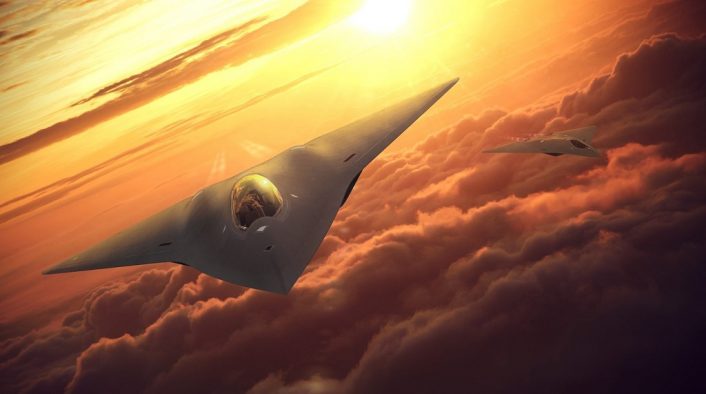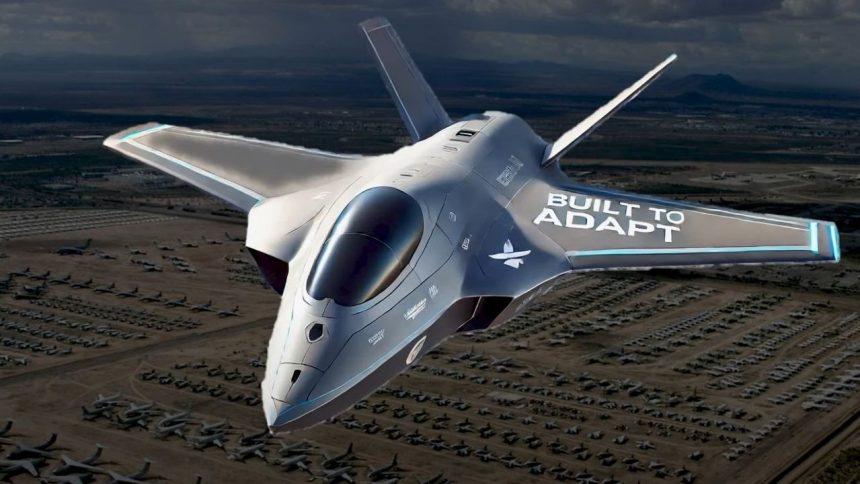Allvin unveiled what the Royal Aeronautical Society has later defined as a ‘notional Light Fighter concept’ while calling for a shift of the next generation aircraft development from the ‘built to last’ philosophy to ‘built to adapt.’
A previous version of this story incorrectly stated that the Global Air and Space Chiefs’ Conference was organized by the Royal Aeronautical Society and has now been corrected to state that the organizer was the UK’s Air and Space Power Association.
Comments by U.S. Air Force chief General David Allvin and other defense industry executives at the Global Air and Space Chiefs’ Conference by the UK’s Air and Space Power Association in London late in July 2024 have again indicated the service possibly moving away from the NGAD (Next Generation Air Dominance) program. Allvin also revealed a notional concept of what is being defined by the RAeS as a “Light Fighter” (although the General did not mention it), hoping for more “adaptable” platforms that can be easily modified and upgraded.
The conference’s proceedings later published by the RAeS (Royal Aeronautical Society) put this notional design against the background of the decision by the U.S.A.F to “back away from the NGAD” and “evaluate” its future “options.” The RAeS quoted unnamed defense industry executives and other attendees who observed a marked shift in the service’s attitude towards the project, which had hit rough weather owing to a host of technical and financial reasons.
It is in this backdrop that Allvin unveiled what the RAeS proceedings called a “notional Light Fighter concept”, as the General called for shifting aircraft development from the “built to last” philosophy to “built to adapt.” Allvin however did not mention either the NGAD or the Light Fighter both in his keynote address and the question and answer round, with the two concepts mentioned only by the RAeS.
Here is an excerpt from the RAeS proceedings:
“On the sidelines of the conference, this debate about uncrewed systems also fed into thoughts about the shock decision by the US to back away from its NGAD (Next Generation Air Dominance) fighter as a F-22 replacement – with the latest news that it will be pausing this programme to more thoroughly evaluate the options and potentially rescope. At least one senior defence industry executive, no doubt with insight into the programme and classified US R&D projects, admitted they too were baffled by the decision, with other comments from attendees being ‘something has changed’.”
A Light Fighter that is ‘built to adapt’
In his presentation for the keynote address, Allvin revealed an F-35-like notional design. This was while he advocated for switching from the paradigm of “built to last” of the Cold War and post-Cold War era to “built to adapt.” He said that the “underlying assumption” was that systems that were built to last would be “relevant” for the future, implying it might not be the case in many aerospace platforms today.
“That proposition can become an albatross. It’s still functioning but it’s not as effective,” Allvin said. “The United States Air Force has a large majority of its systems designed and developed with this value proposition.” Stressing on why adaptability should be placed ahead of durability or ruggedness, he then revealed the picture of the concept jet.
Allvin was implying the use of ‘open systems architecture’, modular design, ‘digital engineering’ and ‘3D-printing/additive manufacturing’ that are adopted for engineering many of the advanced platforms like the B-21 Raider or the Mako air-launched hypersonic missile. They allow for quick upgrades, replacement of parts or swapping out components based on mission needs. This makes repairs easier, maintenance cheaper, allowing for longer technological relevance and greater operational availability during downtimes.
He said the service had envisaged a decade ago a “Future Operating Concept” revolving around “operational agility”, but it is not clear if the rendering in the presentation is linked to this concept. Most likely, it is plainly an unofficial visualization of a mass producible fighter with stealth capabilities, merely derived from the F-35, that Allvin or the U.S.A.F leadership broadly has in mind.
This jet largely has the same wing and V-tail configuration as the F-35, except for the air intakes that are angled backwards, whereas on the Lightning II they are swept forward. Similar to the F-35, the notional design is based around a single engine, while the NGAD fighter has always been represented as a twin-engine design.

Troubled NGAD
The NGAD, considered a replacement for the F-22, is usually described as a “family of systems,” including the crewed aircraft; autonomous, unmanned ‘wingmen’ drones for ISR, decoy or strike missions and other disaggregated capabilities. Called CCAs (Collaborative Combat Aircraft) in U.S. parlance, these drones are considered part of the family of systems, and are funded as an element of the NGAD program.
Air and Space Forces had noted how the NGAD “faces an uncertain future” as it is less likely to find funding in the 2026 budget. It also quoted Allvin from an AFA Warfighters Event on Jun. 13, 2024, who said moving ahead with the NGAD is one of the many choices the U.S. Air Force will have to make in the coming years as it balances a host of modernization priorities with limited budgets.
Later, on Jun. 14, Allvin told reporters that “deliberations are still underway” and that the department is “looking at a lot of very difficult options that we have to consider.” According to some reports, each unit of the NGAD is expected to cost around $300 million, while the service is also pursuing other expensive programs like the B-21 Raider and the Sentinel ICBM.









